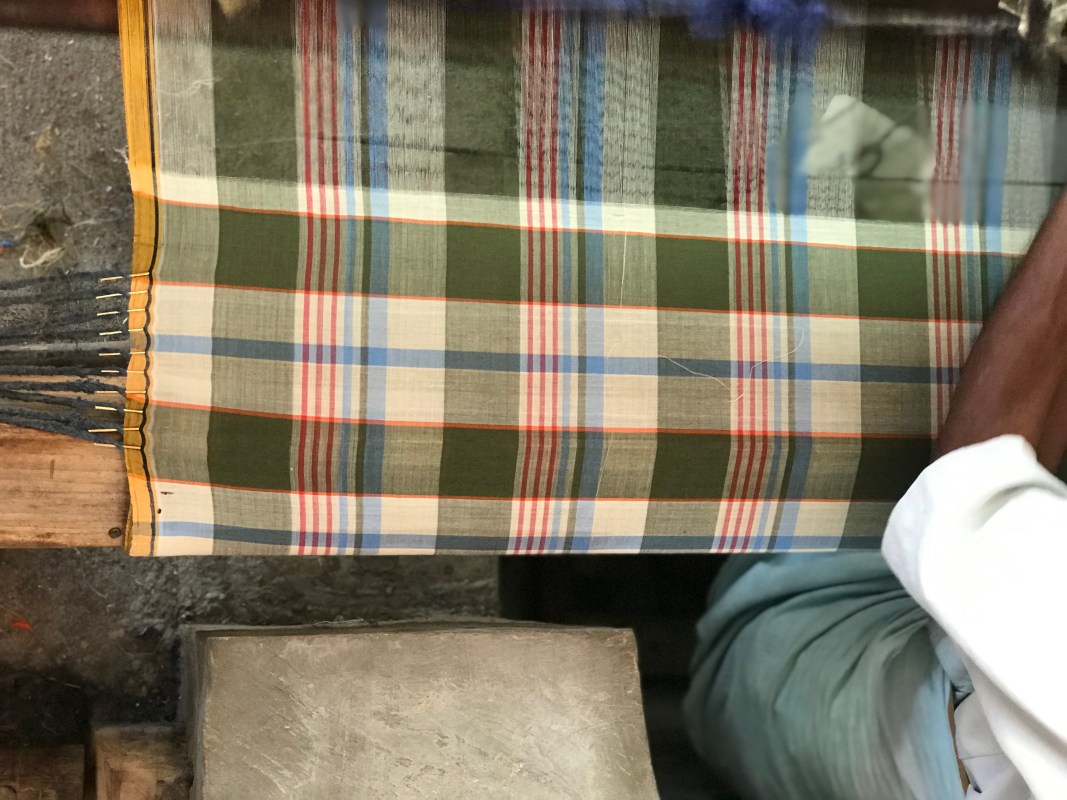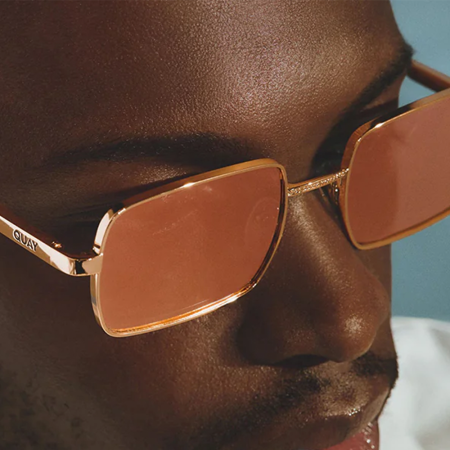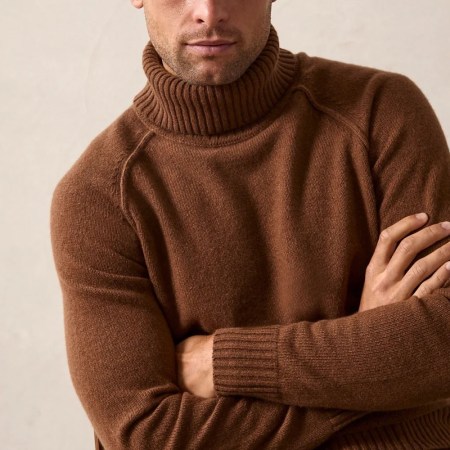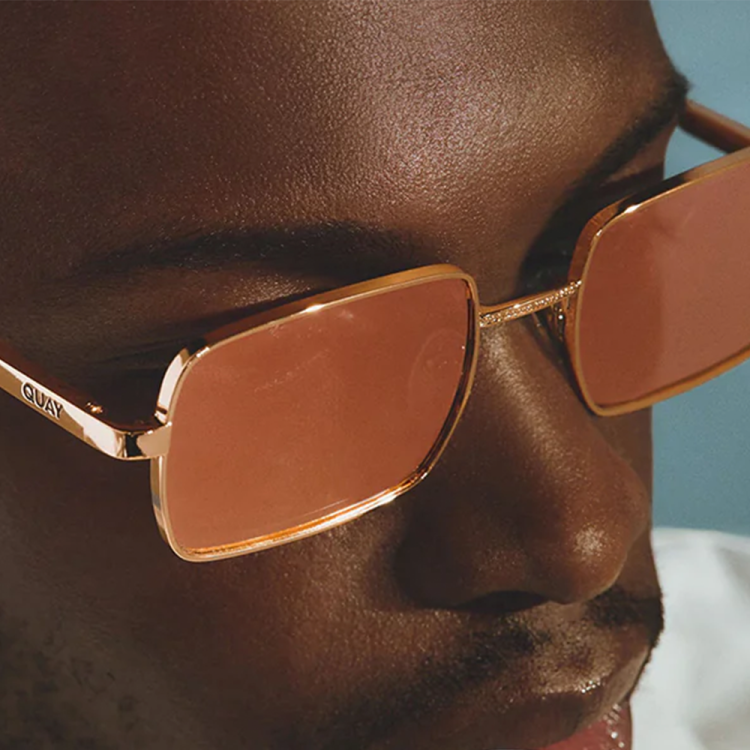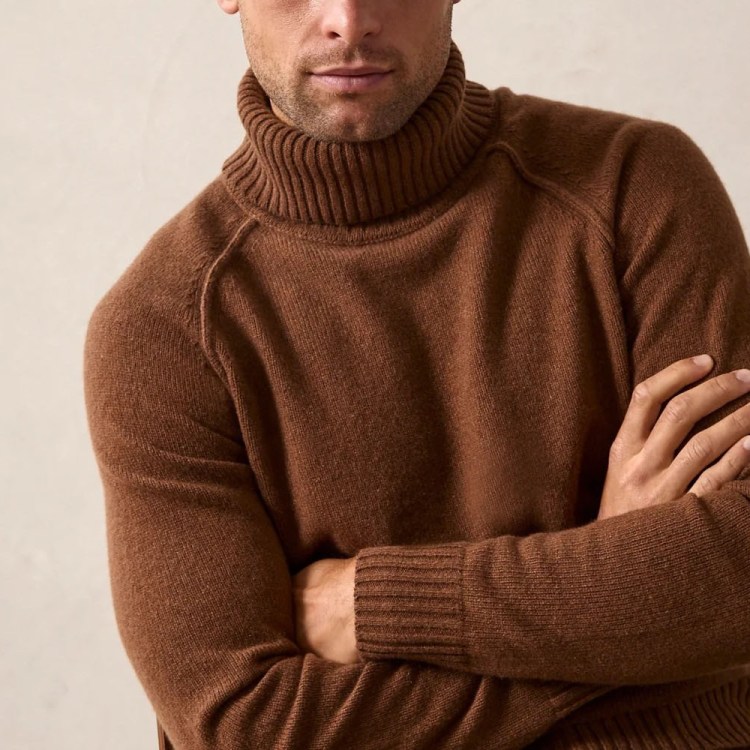There’s likely a madras shirt in your closet, whether or not you’ve ever referred to someone as “Muffy” without irony. Like other pieces from the prep canon — here’s looking at you, polo shirts and khakis — madras has trickled down from the old-money set to become a fixture of middle-class American dressing, as commonly spotted in suburban shopping centers as it is Ivy League campuses.
And yet, it remain mysterious. After all, why should a lightweight cotton shirt with a brightly colored check pattern not just be called… summer plaid?
As it turns out, there’s good reason. Madras is tied to a specific place and way of producing fabric.
“It’s like Champagne from Champagne,” says Prasan Shah, who as co-founder of the Original Madras Trading Company is better qualified to speak on the subject than most. He helms a business that was started a half-century ago by his grandfather, who came to New York to sell authentic madras fabric to retailers including Gant, Brooks Brothers and Ralph Lauren.
Shah continues to supply fabric to name-brand designers today, but in 2020 introduced the company’s first collection of readymade clothing, produced at the same factories responsible for making the fabric. Today, their current collection is available at more than 30 U.S. retailers and the business’s own website.
In the course of a conversation at the Original Madras Trading Company’s Manhattan headquarters, Shah separated fact from fiction, dispelled myths and made the case for why every man should be wearing madras — even in winter.
Madras is from Madras.
For starters, madras the fabric comes from Madras, a coastal city in Eastern India that was renamed Chennai following the nation’s independence (for consistency’s sake, we’ll refer to it as “Madras” from here on). The city was known for its textile industry, and in particular a lightweight cotton fabric that was yarn-dyed in irregular patterns and loomed by hand.
Unlike the Champagne Shah compares it to, no laws determine what can or cannot be labeled madras, so it’s not uncommon to see retailers selling madras that was milled anywhere from China to Portugal or woven from other fabrics like linen. But Shah firmly believes that authentic madras must meet a number of qualifiers: it must be produced in Madras, be composed of 100% cotton, and woven on hand looms.
That hand looming part is important.
“Real madras is not just from Madras—it is handwoven in Madras,” he says.
As Shah sees it, the laborious process of hand looming — which takes between two to three hours to weave a single meter of fabric, as opposed to just 20 minutes by machine — gives madras much of its character and appeal. For starters, machine looms are typically limited to 8 colors, while hand looming allows for as many shades as the heart desires — a boon for a style known for its complex, colorful checks. But it also leads to slubby irregularities that add character to each finished garment.
“No two shirts are ever going to be the exact same, because it’s literally a human standing there and weaving the fabric,” Shah says.
While handweaving was ubiquitous in the madras industry a half-century ago, Shah says that the Original Madras Trading Company is almost alone in continuing to rely on hand looms. Small co-ops consisting of individual handweavers working from home exist, but their fabric is typically bought by the Indian government and resold locally.
They wear madras in India — but not how Americans would recognize it.
Naturally, madras is a staple fabric in its country of origin, though it’s not worn as a button-down shirt or a pair of preppy shorts. Rather, madras is used to make sarong-like garments called lungi.
“In many ways America, and Western fashion, made Madras what it is,” Shah says. “If you visit Madras, specifically where our factory is based, you’ll almost never see a madras checked shirt.”
Madras’ journey to Ivy Style was a long one.
How exactly madras became a preppy staple starts with the British colonization of India. The East India Company, and later the British Empire, exported Indian textiles including madras to its far-flung dominions.
The first places to catch madras fever outside the subcontinent were Britain’s African colonies, which received large madras swatches knit into handkerchiefs to avoid a British tax on textiles. These colorful, scarf-like handkerchiefs eventually made their way to the Caribbean, where they continue to be a part of national dress on islands like Martinique.
After WWII, American Ivy League students vacationing in the Caribbean were exposed to the fabric’s charms and brought it back to the States, where it would be made up as button-down shirts, trousers, and sport coats by the likes of J. Press, Brooks Brothers and other campus retailers. Shah says that the American demand for madras reached a fever pitch in the 1970s, alongside a somewhat dubious trend known as “bleeding madras.”
No, it doesn’t have to bleed (but could).
Perhaps you’ve heard Vampire Weekend sing “Dress yourself in bleeding madras” on their self-titled debut album or read in The Official Preppy Handbook that madras is authentic so long as it “bleeds.” But according to Shah, this quality — wherein a madras shirt’s colors will run in the wash — was a bug, not a feature.
“A lot of people think real madras is bleeding madras, which I would disagree with,” he says.
Shah traces the myth back to the ‘70s, when Brooks Brothers bought a batch of madras shirts that had been improperly color-fasted with chemical azo dyes. Rather than writing it off as a loss, Brooks Brothers marketed them as “bleeding madras,” touting the mistake as a virtue.
Many came to enjoy the imperfection, which added another level of character to the garment. Shah isn’t opposed to that appreciation but does have issues with the environmentally unfriendly dyes that caused it. However, he says that the company is working on naturally dyed shirts colored with substances like indigo and turmeric, which would similarly bleed in the wash (for now, enthusiasts may want to look to Junior’s, which offers made-to-order shirts in a bleeding madras fabric sourced from a small, Madras-based producer working with eco-friendly dyes).
It’s a great time to wear madras—year-round.
Some fifty years from its first golden age — and the founding of the Original Madras Trading Company — Shah believes that madras is experiencing something of a renaissance. So much so that his company has even developed a brushed, heavier weight “winter madras” that will feature in garments like robes, vests and shirts this coming fall and winter season.
It’s a furthering of the fabric’s mission that adds new relevance to another one of Shah’s commandments.
“I always feel that no matter what happens in fashion, every guy needs to own a piece of madras,” he says.
This article appeared in an InsideHook newsletter. Sign up for free to get more on travel, wellness, style, drinking, and culture.
